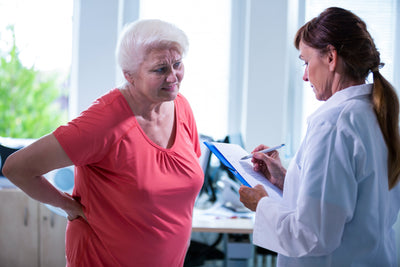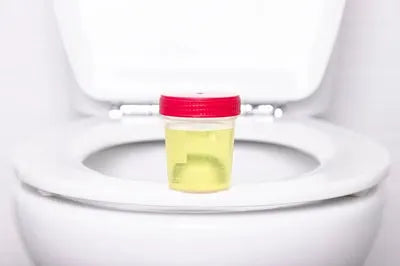Introduction
At 72, Mr. Sharma noticed small leaks becoming a daily bother. He laughed it off at first, "part of getting old," he said. But soon, evening walks stopped. So did chai with friends. He spent days confined to his bedroom, tethered to the toilet and embarrassment.
While anyone can be affected by incontinence, it is generally more common in older people, especially in women. Urinary incontinence can be embarrassing for many people and negatively impact the quality of life. If not treated promptly, urinary incontinence can lead to severe health complications, mainly among older people, such as skin rashes, urinary tract infections (UTIs), social isolation, and depression.
Whether the condition is mild or severe, people with incontinence must seek medical attention, as it can often be treated, controlled or in some cases, cured. This blog will explain how to take care of elderly patients with urinary incontinence, including its types and treatment & care options.
Types of Urinary Incontinence in Elderly
For incontinence care in the elderly, it is essential to know the various types of urinary incontinence. So, let’s dive in!
-
Urge Incontinence:
Urge incontinence occurs when you need to urinate right away and cannot hold long enough to get to the toilet. Usually, it is a problem in elderly people and in those who have diabetes, Alzheimer’s disease, multiple sclerosis or stroke.
-
Stress Incontinence:
Stress incontinence happens when urine leaks due to pressure on the bladder during certain activities, such as exercise, coughing, laughing, sneezing, running, jumping or lifting heavy things.
-
Overflow Incontinence:
Overflow incontinence is generally described as the uncontrollable leakage of small amounts of urine from the bladder. It occurs when you feel difficulty in emptying the bladder completely, leading to leakage and frequent urination. It is usually caused by a blockage or a weak bladder muscle.
-
Functional Incontinence:
This type of urinary incontinence generally occurs in older people who have normal bladder control. It indicates urine leakage as people with this condition are unable to get to the toilet in time because of arthritis or other disorders that make it hard to move quickly.
-
Mixed Incontinence:
Mixed incontinence refers to a combination of several conditions, leading to urine leakage problems. For example, the most common type of mixed incontinence, with a combination of urge and stress incontinence, occurs in older women. However, a mixture of urge and functional incontinence occurs in those who have severe dementia, Parkinson’s disease, stroke, and other disabling neurological conditions.
Non-surgical Management & Care
The treatment and care of elderly patients with urinary incontinence generally depend on the type and severity of the incontinence symptoms. Hence, let’s understand the non-surgical management and care for incontinence.
Lifestyle Changes:
Implementing lifestyle changes can significantly help improve urinary incontinence symptoms. So, here are some of the recommended lifestyle changes:
-
Minimising caffeine intake, like tea, coffee and cola, can help improve incontinence symptoms, as this can irritate the bladder.
-
Avoid excessive intake, especially before bed. It can make incontinence worse.
-
Manage your weight as being overweight can put pressure on your bladder and pelvic floor muscles, making incontinence worse.
Pelvic Floor Muscle Training:
Pelvic floor muscle training, commonly known as Kegel exercises, is recommended to strengthen the neuromuscular control over the pelvic floor that supports the bladder, rectum, and uterus. This muscle training helps improve bladder control and prevent urinary incontinence.
The training will be provided to assess whether you can contract your pelvic floor muscles.
Bladder Training:
Bladder training is the first-line treatment for urinary incontinence symptoms. The main aim of bladder training is to learn techniques to hold more urine and increase the length of time between urging to urinate and passing urine.
However, if you have mixed urinary incontinence, pelvic floor muscle training and bladder training can also be combined.
Incontinence Products:
Though incontinence care products are not a treatment option for urinary incontinence, they can be useful for managing this condition. They include:
-
Absorbent products, such as adult diapers, pants or pads
-
Handheld urinals
-
A urinary catheter (a thin, flexible tube that is inserted into your bladder to drain urine)
-
Devices, such as pessaries and urethral inserts, that are placed in the vagina or urethra to avoid urine leakage, especially during exercise.
Role and Importance of Caregivers
Caregivers play an essential role in taking care of elderly patients with urinary incontinence. They provide incontinence care by maintaining hygiene, changing soiled undergarments promptly, promoting bladder training & exercises and encouraging regular bathroom breaks. Moreover, these effective activities not only reduce stress and enhance the quality of life but also significantly help prevent incontinence.
Furthermore, incontinence care products not only help both the caregiver and the patient to manage incontinence but also enhance the patient's comfort and freedom. Try Friends Premium Adult Dry Pants and Friends Overnight Adult Diapers for maximum comfort throughout the day, 0 leakages and skin irritations.
Urinary incontinence in older people is a common symptom, resulting in embarrassment and decreased quality of life. Hence, it is essential to take good care of elderly patients with urinary incontinence. While a wide range of options are available, from lifestyle changes to advanced medical interventions, incontinence can be managed or controlled through proactive caregiving. By identifying its types, recognising its symptoms and implementing proper incontinence care, caregivers maintain the overall health of elderly people.
Product Recommendations
FAQs
Q1. What are some popular incontinence care products?
Ans. Some of the popular incontinence care products are absorbent adult diapers, pads, and pull-up pants.
Q2. How do you care for the elderly incontinence?
Ans. Caring for the elderly with incontinence includes various key approaches, including managing hygiene, providing quick toileting support, encouraging bladder training & exercises, making lifestyle changes and promoting overall health.
Q3. How do you treat urinary incontinence in the elderly?
Ans. Treatment for urinary incontinence in the elderly depends on its type, severity, and underlying cause. However, developing a urinary incontinence care plan is the simplest and safest treatment.
Q4. What is the appropriate nursing care for a patient with urinary incontinence?
Ans. The appropriate nursing care for a patient with urinary incontinence generally focuses on managing the condition, providing bladder training, improving continence, encouraging fluid intake & changes in diet, scheduling bathroom trips and maintaining the patient's overall health.
Q5. How to handle urinary incontinence?
Ans. You can effectively manage urinary incontinence through lifestyle changes, pelvic floor exercises or Kegel exercises, bladder training, and in some cases, medication or surgery.





















